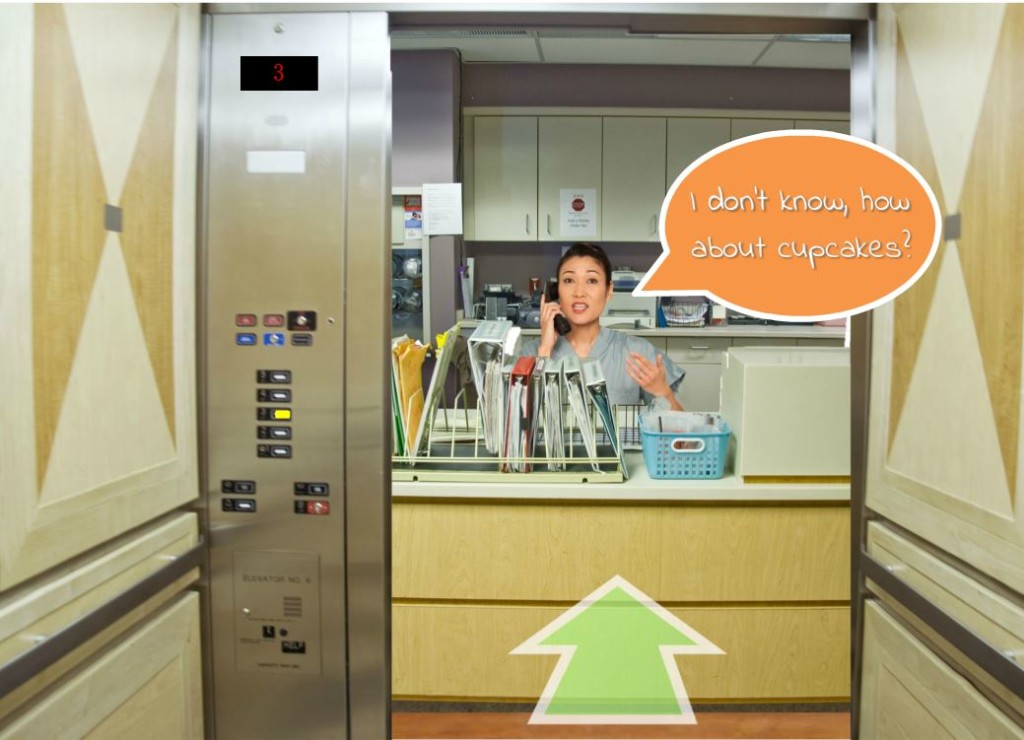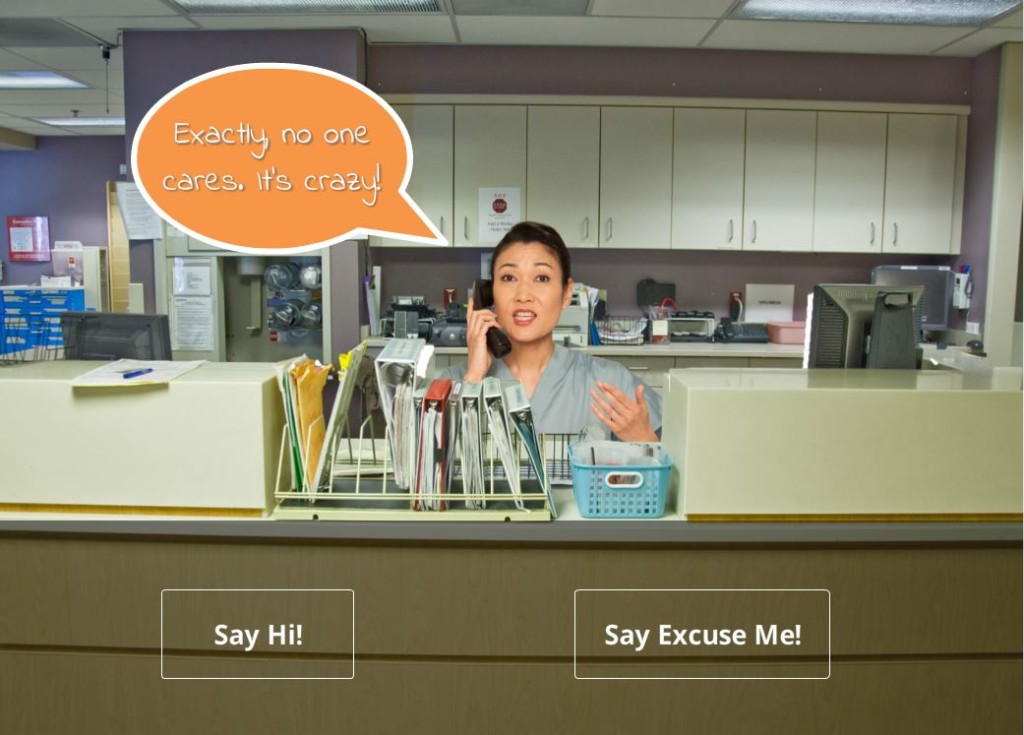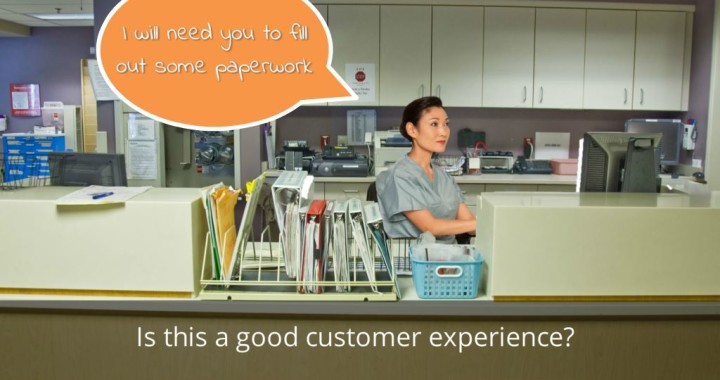A scenario using First Person Role Play (FPRP) is a great way to engage learners from the start in e-learning courses. If we think of it, the idea of playing a character in e-learning scenarios aligns very well with the notion of adults being self-directed learners. In the gaming industry, games that apply this concept are known as Role Playing Games or RPGs. The concept has been very fruitful in video games and I think it has great potential if we could create e-learning experiences with the same approach. This post discusses some key elements of a FPRP e-learning scenario and a quick demo for a customer service course in healthcare.
Self-Directed Learning Scenario
One key thing about adult learners is the need to be self-directed. This usually means adults don’t need a classroom to learn, but they do need knowledge, context and application of what they need to learn. FPRP scenarios meet the requirements for self-directed learning because they immerse the learner into the action from the start. The learner has to do something at every step of the e-learning sequence to slowly reveal additional helpful information to aid in the learning process. In the image below, the learner is presented with a first person view of riding an elevator. The elevator door opens and a medical clerk is sitting at a reception desk. The learner is presented with an arrow to approach the reception.

Interactive Scenario Choices
The second key element for RPFP experiences is the ability to decide from a set of choices. In this demo scenario, the clerk is obviously ignoring the learner who’s playing the role of customer. When engaging with the clerk, the learner gets two different options to interact with the character. The course could then branch into various outcomes depending on the selection made by the learner.

Reflective Feedback
The most powerful experience in any training or education endeavor is reflective feedback. Why? Because reflective feedback is part of the learning process as learners would consider their immediate and\or previous experience and align it to their new knowledge. In FPRP scenarios, reflection can be easily stimulated by referring back to previous events in the same learning experience. The sample below shows a quick view on how e-learning can be used to allow learners to experience the situations of their work environment in a healthcare setting. You would notice the opportunity to reflect on the customer service provided to be at the culmination of the sample.
Conclusion
In summary, First Person Role Play (FPRP) scenarios are a great way to engage learners from the start. FPRP and RPGs are successful because they provide users with knowledge, context and application while immerse into a character. Learners can be self-directed in FPRP scenarios and also exercise giving and receiving feedback.


